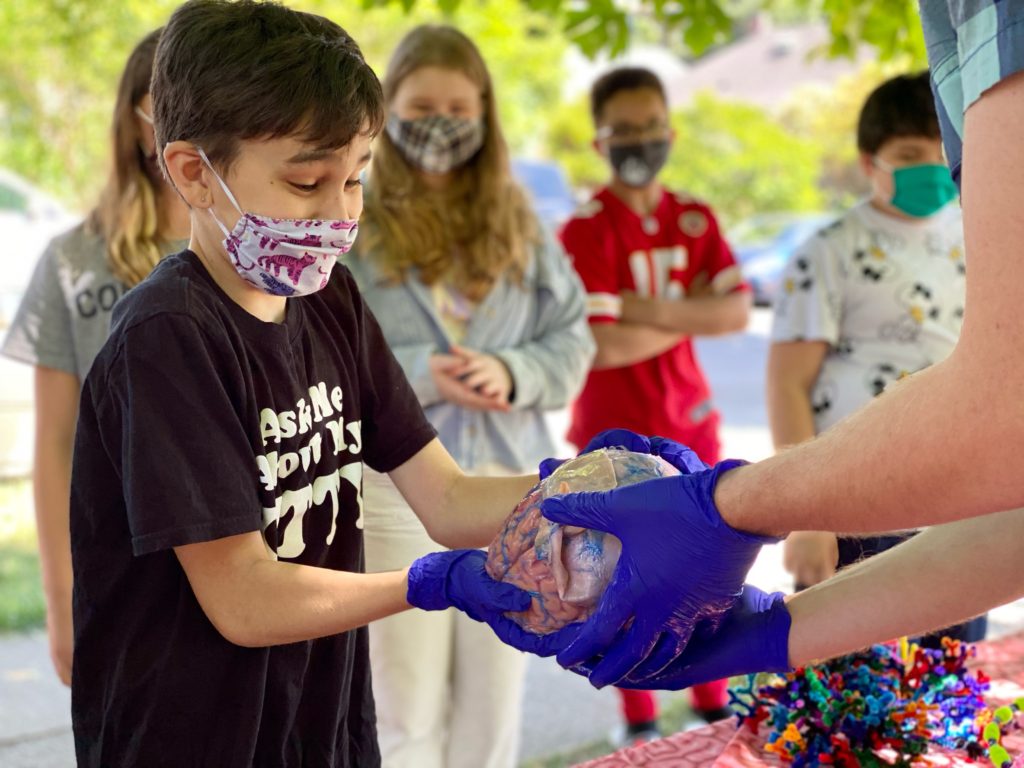
“I dwell in possibility.”
– Emily Dickinson
We remember this!
It’s been over a year since we evacuated campus, struggled with ring lights and camera cords and converted all our live, in person interdisciplinary neuroscience courses to an online format. Only days before closure, we were holding noggins in crowded classrooms – with local press! – and discussing diverse topics brought up by K-12 students, including research on drugs, bias, anxiety, depression, concussion, memory, sleep, audition, dementia, gender identity, Parkinson’s disease and the development of adolescent brains.
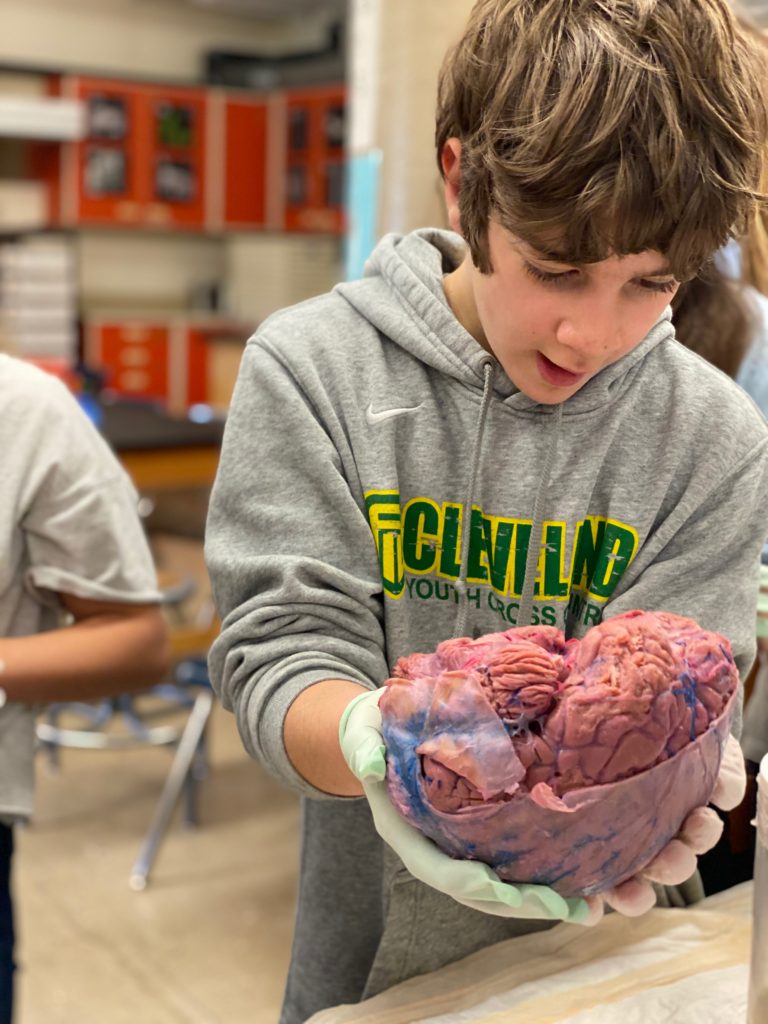
LEARN MORE: Brains examining brains
LEARN MORE: An Oregon nonprofit brings an actual brain, and brainpower to classrooms
The fear, loss and uncertainty of last spring scattered us to separate virtual spaces, but of course people, like brain cells, are eager to connect. Our classes were more full than ever – bursting, in fact, with students in tiny Zoom frames.
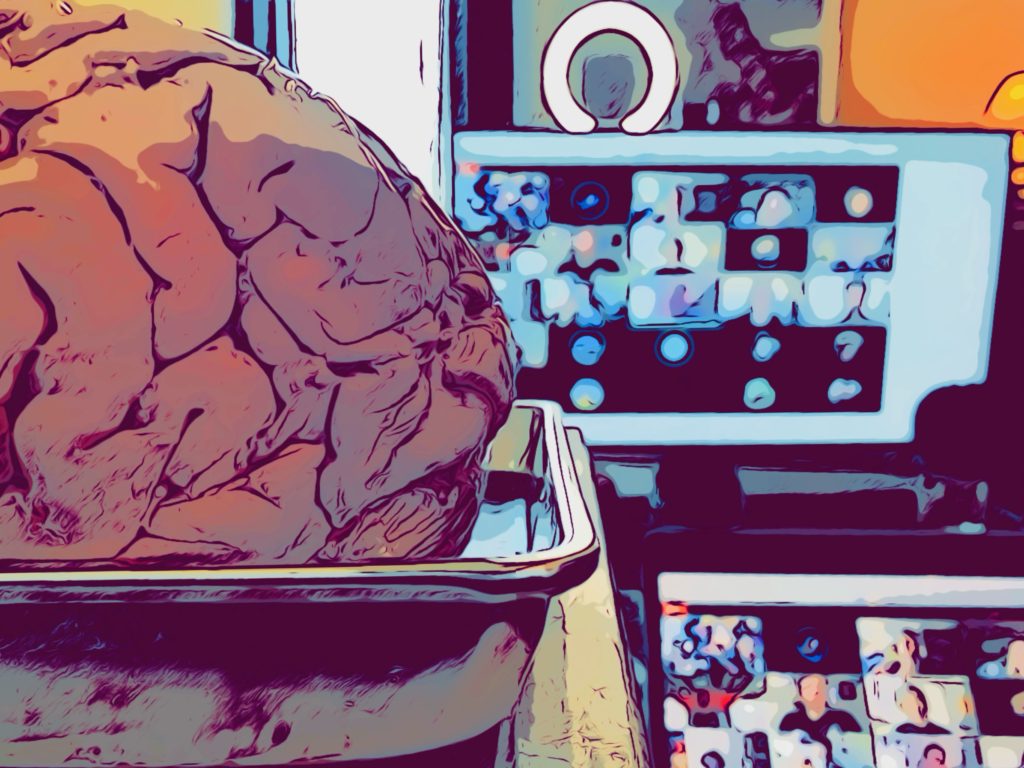
Pipe cleaner glia and neurons became even more compelling found object brain cells, made with materials we had at home that perhaps meant something to us, and could tell stories.

We recorded and embedded countless YouTube videos reviewing course topics, ditched any remaining static and expensive textbooks and made our online class websites richer than ever with open access text, new images and updated links to NIH-funded research.

LEARN MORE: Noggin + Portland State University
Our outreach went to the web, too, including two global webinars (in partnership with BrainFacts.org and the Society for Neuroscience) and internet visits to K-12 classrooms. There were some benefits to using a browser, as we decorated virtual spaces with real brains and art, invited international participants and collaborated with U.S. public schools in Oregon, Washington and Hawaii!

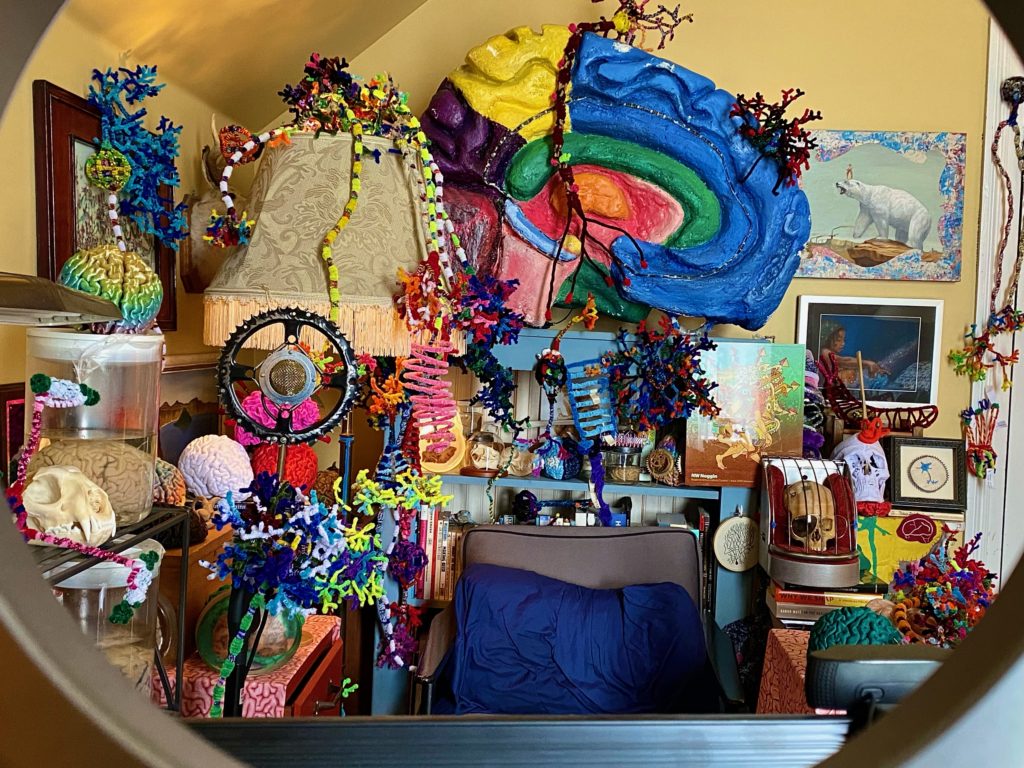
LEARN MORE: Pandemic connections
LEARN MORE: Reconnecting Our Brains, One Cell at a Time
LEARN MORE: Action AND Potential!
LEARN MORE: Uploading your brain from Vancouver
LEARN MORE: Ho brah, he lolo maoli kēlā!
LEARN MORE: Desperately Seeking Rasa
LEARN MORE: If you like be akamai, make sure you get choke shut eye
LEARN MORE: A crayon in Homer’s brain
LEARN MORE: Neurons in Minecraft & More!
LEARN MORE: Thank You Northwest Noggin!
Our signature annual event, NogginFest, the largest free public celebration of music, art and neuroscience research in the Pacific Northwest went virtual this year as well. We raised funds to send our volunteers to the potentially live SfN conference in Chicago this fall, and our students learned how to organize and direct an exciting, informative, well-run, art-filled online event!
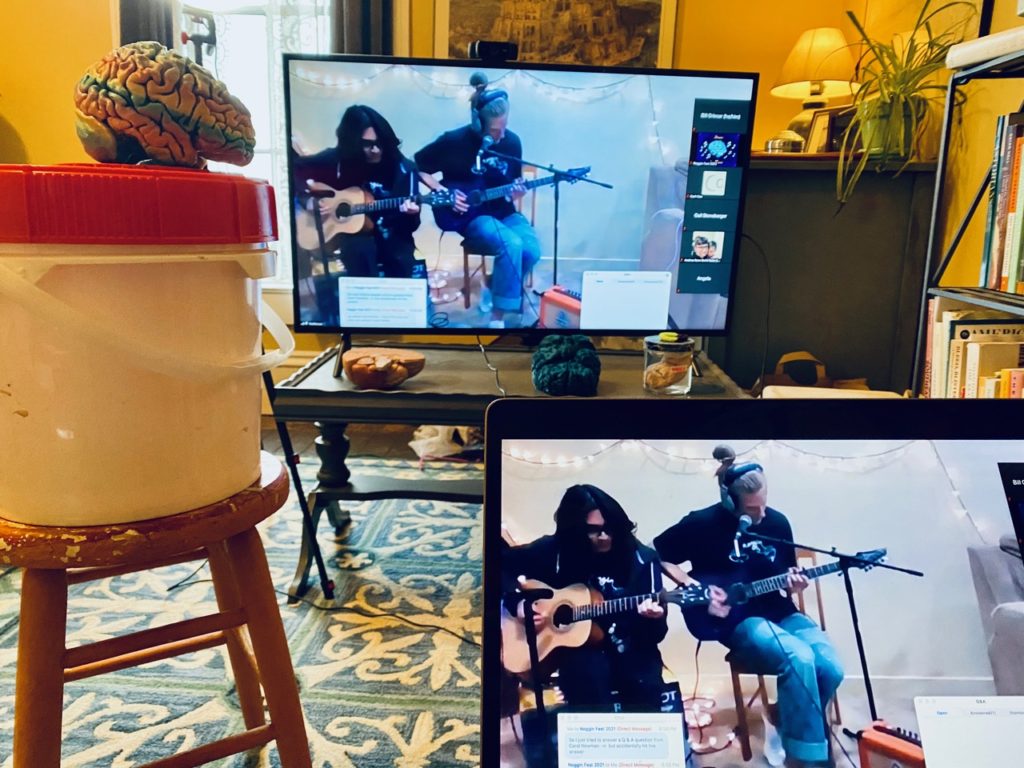
LEARN MORE: NogginFest 2021: Threshold Potential!
LEARN MORE: Noggin @ Society for Neuroscience
And we did manage a few in person outreach activities in the midst of COVID-19, notably at p:ear, an extraordinary nonprofit serving houseless youth in Old Town Portland.

At p:ear we masked up and joined young people without safe places to sleep to help build a beautiful outdoor brain garden! We also offered screen-printed shoulder sacks (a.k.a. “Noggin Vesicles”) filled with hand-stitched brain masks, KN95 masks, art supplies, 3D printed brains, “brain” socks, first aid kits, hand sanitizer, Noggin t-shirts, toothpaste, toothbrushes and emergency blankets.

“Hope will never be silent.”
– Harvey Milk
LEARN MORE: Returning to find a voice
EARN MORE: The world, filtered
LEARN MORE: A brain garden grows @ p:ear
LEARN MORE: Noggin @ p:ear
But only this spring, as Northwest flowers returned, did we start exploring “hybrid” outreach experiences in public schools, combining a series of online visits with actual live, vaccinated, outdoor engagement where once again kids could balance real brains and craft their own cells and discuss their many insightful questions and ideas in person.

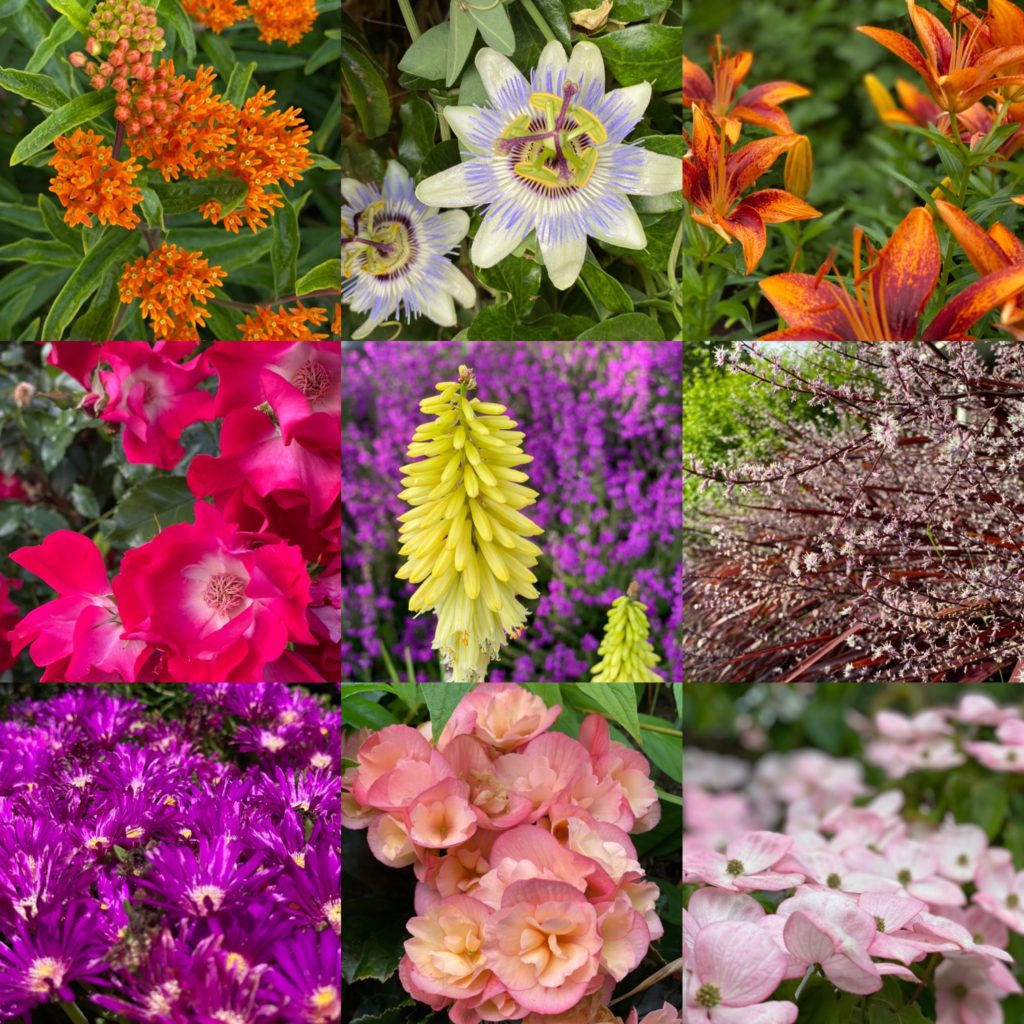
LEARN MORE: Clatsop Community Cortex
Back to school – live!
The last public school we visited THIS spring was also the last one we’d visited the previous spring before the coronavirus lockdown!
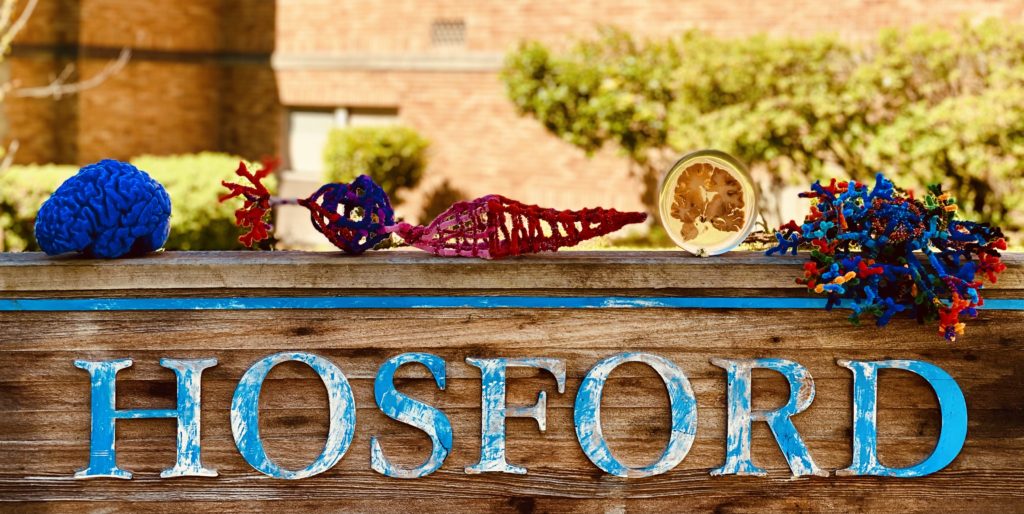
We made two virtual online visits to Portland’s Hosford Middle School to consider some incredible questions from 200+ 6th graders in Jane Van Dam and Kevin Marquardt’s biology classes…

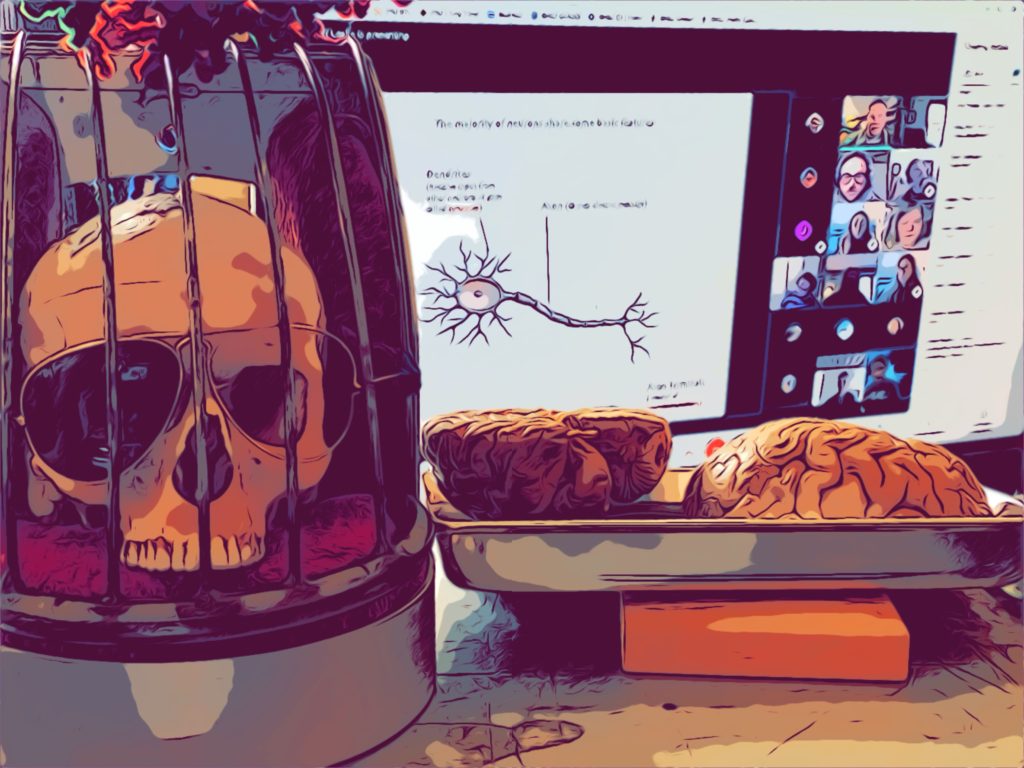

Then we followed up with two LIVE campus visits!
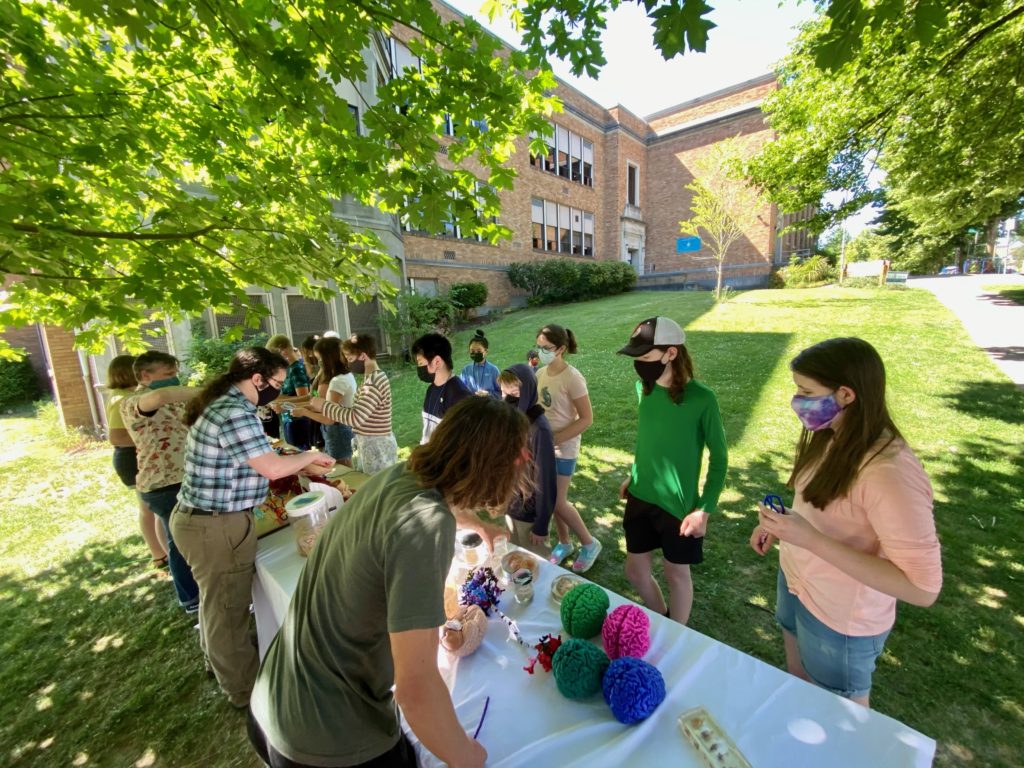
Our wonderful, informed, masked and creative volunteers included Magda Armendariz Sullivan, Kass Fitzgerald, Alex Heinrich, Andrea Rano, Jessie L. Sheeran, Allister Williams, Ellie Phelps, Roman Cimkovich and Wilson Lubeck, all undergraduates in Psychology at Portland State University. Dr. Theanne Griffith, a neuroscientist and author of an exciting book series for children on science, including the science of brains, joined us one morning virtually from California to consider student questions and run a compelling, high energy experiment!

LEARN MORE: Dr. Theanne Griffith, UC Davis
LEARN MORE: Dr. Theanne Griffith, neuroscientist and author
LEARN MORE: Magnificent Makers
LEARN MORE: Dr. Griffith @ NOGGINFEST!
Student Questions
Insightful, deep, engaging, thought-provoking – what young people already know and suspect about brains and what they’d like to know is endlessly fascinating, and spurs so many memorable conversations!
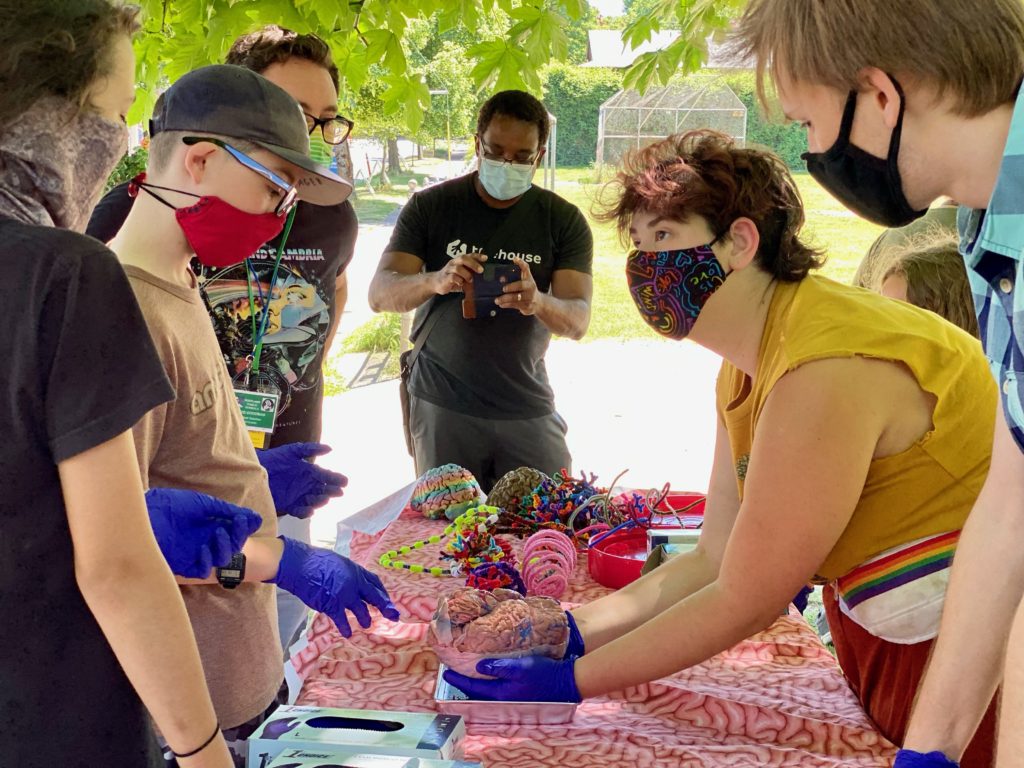
“All kids need is a little help, a little hope and somebody who believes in them.”
– Magic Johnson
Going live, holding brains, crafting neurons and glia and just talking about student interests and ideas brought back a flood of related memories, engaging our hippocampi in recall and reflection on past experiences – from not that long ago.

LEARN MORE: Hippocampus in health and disease: An overview
LEARN MORE: The hippocampus generalizes across memories that share item and context information
LEARN MORE: Viewpoints: how the hippocampus contributes to memory, navigation and cognition
LEARN MORE: Memory, Poetry, Brains
We were in our element – and it all came rushing back. We feel genuine live community connections returning, and it truly brings us hope.
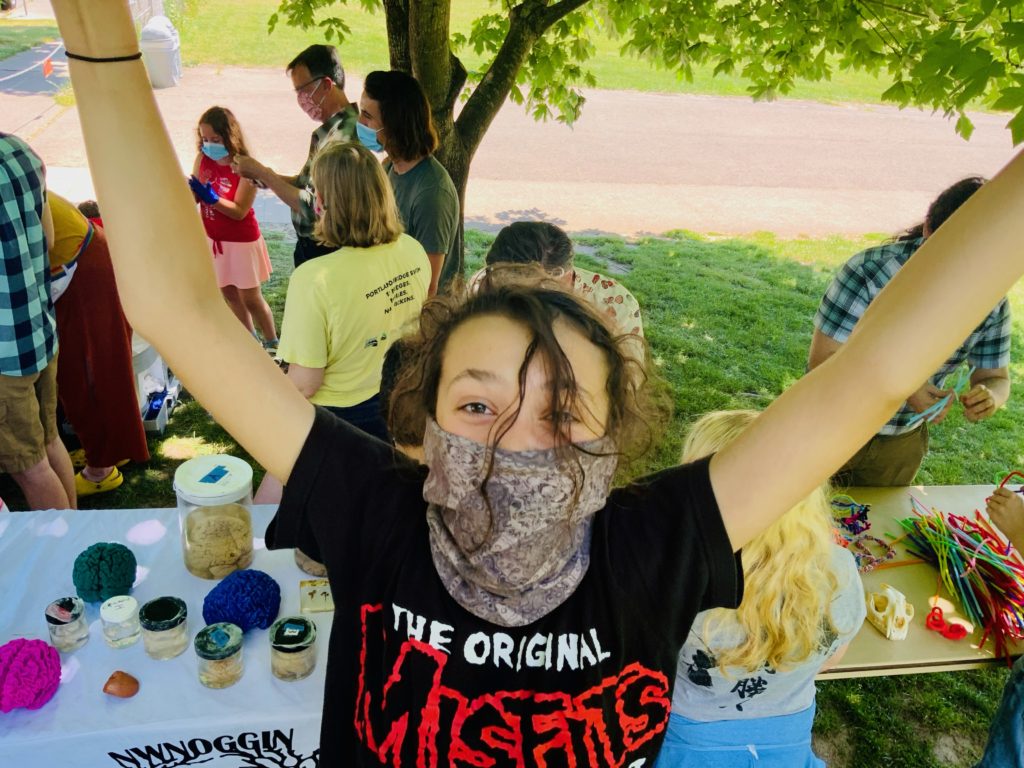
Please enjoy what 6th graders at Hosford want to understand. We are so thankful for their questions, their enthusiasm – and for public investment in evidence-based research on the structure and function of our brains.
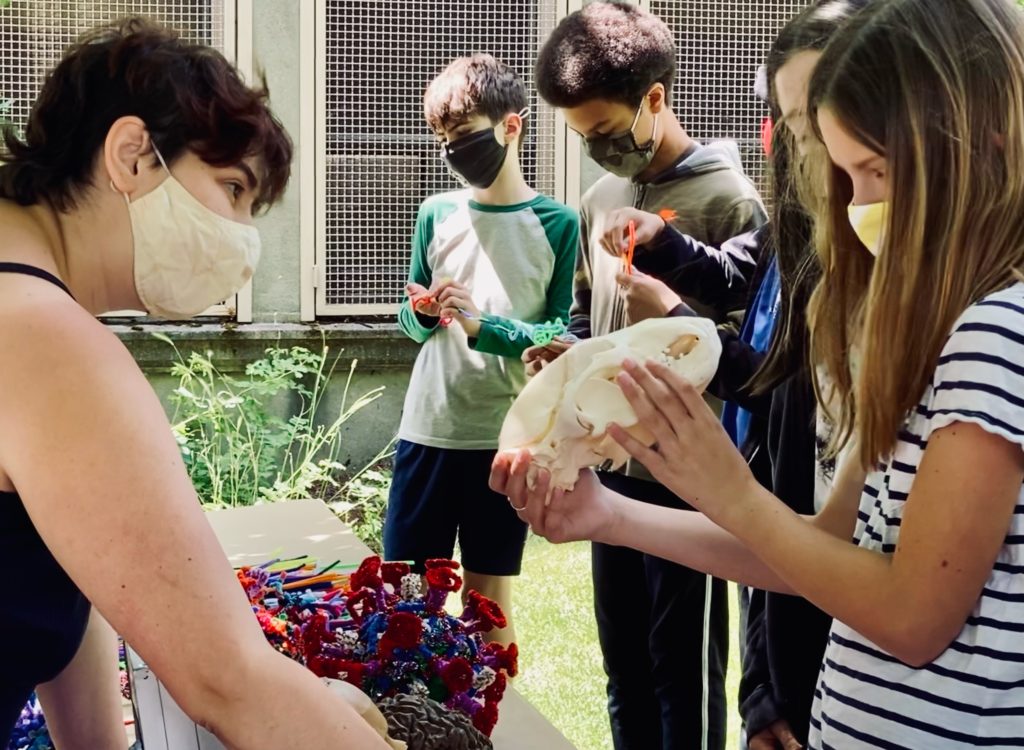
In what part of the brain do you get thoughts?
How does COVID-19 affect your brain?

“While primarily a respiratory disease, COVID-19 can also lead to neurological problems. The first of these symptoms might be the loss of smell and taste, while some people also may later battle headaches, debilitating fatigue, and trouble thinking clearly, sometimes referred to as “brain fog.” All of these symptoms have researchers wondering how exactly the coronavirus that causes COVID-19, SARS-CoV-2, affects the human brain. In search of clues, researchers at NIH’s National Institute of Neurological Disorders and Stroke (NINDS) have now conducted the first in-depth examinations of human brain tissue samples from people who died after contracting COVID-19. Their findings…suggest that COVID-19’s many neurological symptoms are likely explained by the body’s widespread inflammatory response to infection and associated blood vessel injury—not by infection of the brain tissue itself.”
LEARN MORE: Taking a Closer Look at COVID-19’s Effects on the Brain
How do you become unconscious when you sleep?
How did they get the brains
How long does it take (or repetition) for your brain to remember something?
How is the human brain different from a dog brain?

“…we can see from an MRI of a dog brain that even though it is smaller than a human brain, all of the same basic structures are present. This is true for large regions like the cerebral cortex and the cerebellum, as well as for smaller, subcortical structures like the brainstem, hippocampus, amygdala, and basal ganglia, which have important roles in movement, memory, and emotion.
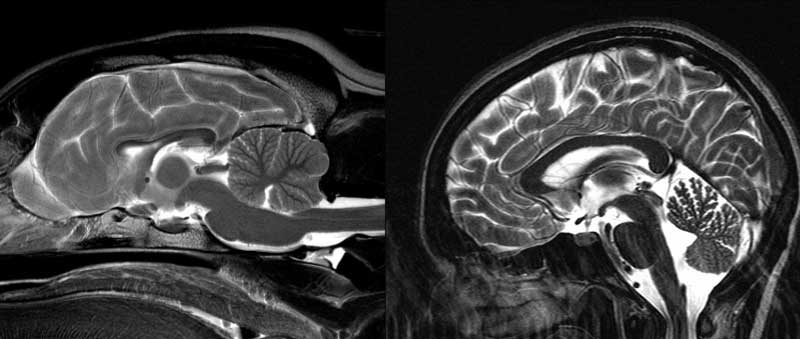
“Dogs also have large olfactory systems, comprising about two percent of the total brain weight (compared to 0.03 percent in humans). Where dogs fall short is in the cortex. Apart from being smaller, there are fewer folds, which means less surface area and fewer neurons. The frontal lobe, which in humans occupies the front third of the brain, is relegated to a paltry ten percent in dogs…”
LEARN MORE: Decoding the Canine Mind
“While ferret, mongoose and cat have increasingly larger cortices (3.1 g, 9.3 g, and 24.2 g) with increasingly more neurons (39 million, 116 million, and 250 million neurons, respectively), we find that the lion has approximately as many neurons in the cerebral cortex as the average found in dogs, ca. 500 million neurons, despite a twice larger cortex in the lion than in the dogs…Remarkably, of all the individuals we analyzed, the one with the most neurons in the cerebral cortex was a golden retriever dog (627 million neurons), followed by the lion (545 million neurons), one of the raccoons (512 million neurons), the striped hyena (495 million neurons), a smaller dog of unspecified breed (429 million neurons) and a second raccoon individual (395 million neurons).“
LEARN MORE: Dogs Have the Most Neurons, Though Not the Largest Brain
What happens in your brain when you learn something new?
what’s the worst thing that could happen to the brain
Are you your brain or are you you

When did we start wondering how the brain worked?

LEARN MORE: Why Study the History of Neuroscience?
What happens in your brain when you associate color with flavor? Like a yellow jelly bean tastes or is associated with lemon
What are the wrinkles?
How much of our brain do we actually consciously know how to use?

why can some people daydream in almost like full movies but some people cant?
Do we really only use 10% of our brains?
hOW does it WOORKK?

why do i get migraines and what causes them to be clusters or every month?
How does your brain process words so fast? How can you be saying something at the same time that your brain is trying to figure out what to say?
why do some people like me believe in fixed mindsets while others don’t

How do the conscious mind, and the unconscious mind relate when you remember your dream?
How come my autism makes it hard to process my words?
does our brain actually get bigger when we get smarter?
How do brains grow bigger?
what makes you forget things

What is the biggest mystery about the brain at the moment?
What would you say is the biggest discovery about the brain?
How does the brain use energy?
When is the brain fully developed?
how can your emotions effect different parts of your brain, like creativity or decision making.
How effective is sleep on your brain?

can your brain actually grow in size?
Does the Brain change when your mental health is different???
How big can a brain get? and what is the heaviest brain ever recored?
I wonder how different peoples brains are different?

what do brainzzzzzzzzzzzzzzzzzzzzzzzzzzzzzzzzzzzzzzzzzzzzzzzzzzzzzzzzzzzzzzzzzzzzzzzzzzzzzzzzzzzzzzzzzzzzzzzzzzzzzzzzzzzzzzzzzzzzzzzzzzzzzzzzzzzzzzzzzzzzzzzzzzzzzzzz taste like
can the size of your brain affect how smart you are?
What does your brain look like as you get older and how much does it evolve over 10 years of your life?
DOES YOUR BRAIN ACTUALLY FART WHEN YOU CANT REMEMBER SOMETHING?????
Why does the brain have all of those wrinkles?
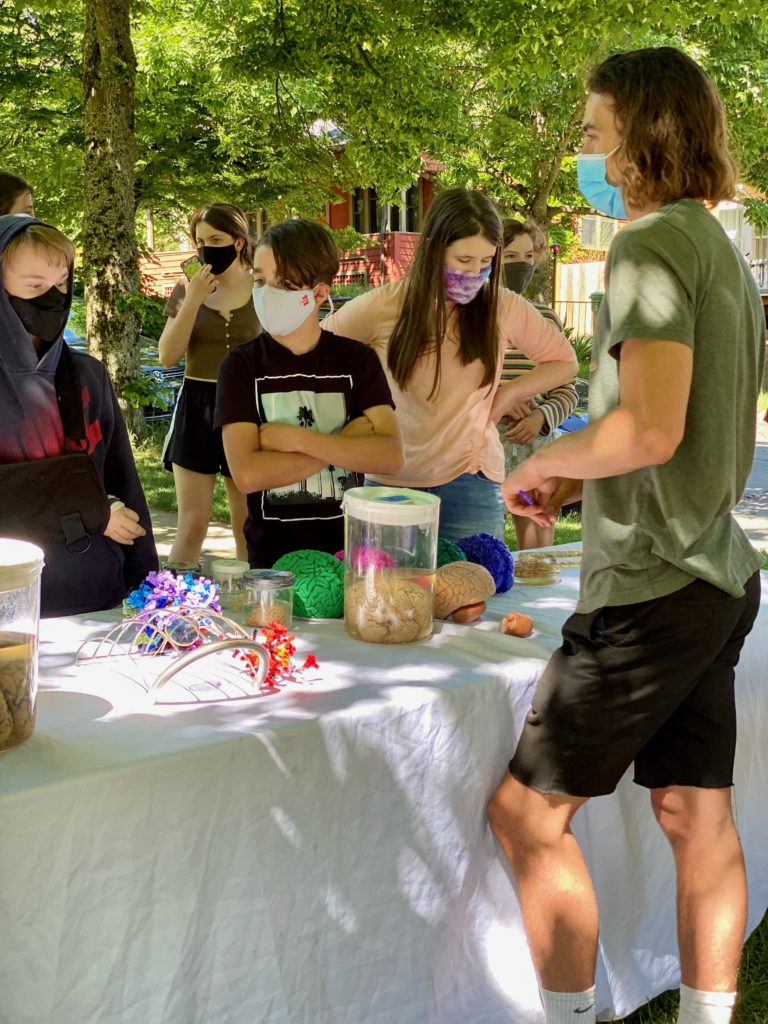
How does the brain change over time?
How do other people’s reactions to things we do/say affect our brain?
How are different people with different mindsets, backgrounds, and life choices brains are different?
Are people with bigger brains necessarily smarter?

How much of something harmful is needed to impact your brain?
Are some people’s creative and logical brain halves switched, and how would that affect them?
If you don’t have the creative part of your brain will it just completely stop working?
How much memory can a brain hold?
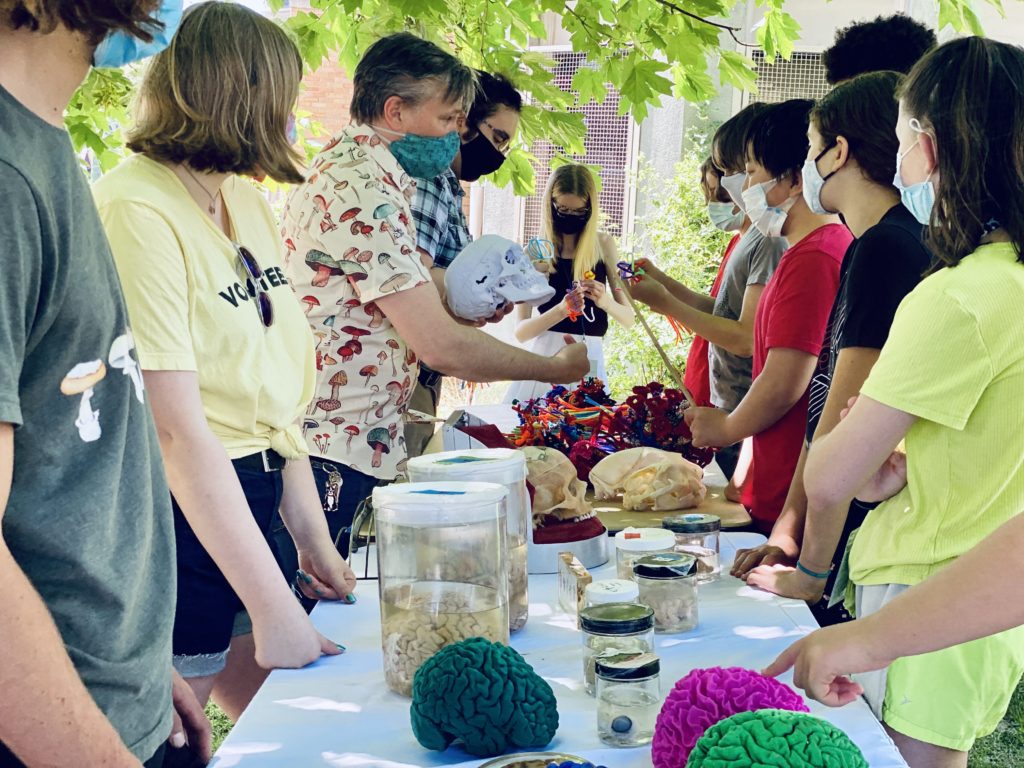
Thank you NW Noggin volunteers. You’re amazing!! And thank you Hosford students, teachers Jane Van Dam and Kevin Marquardt, and principal Amy Slaughter for welcoming us back to school!


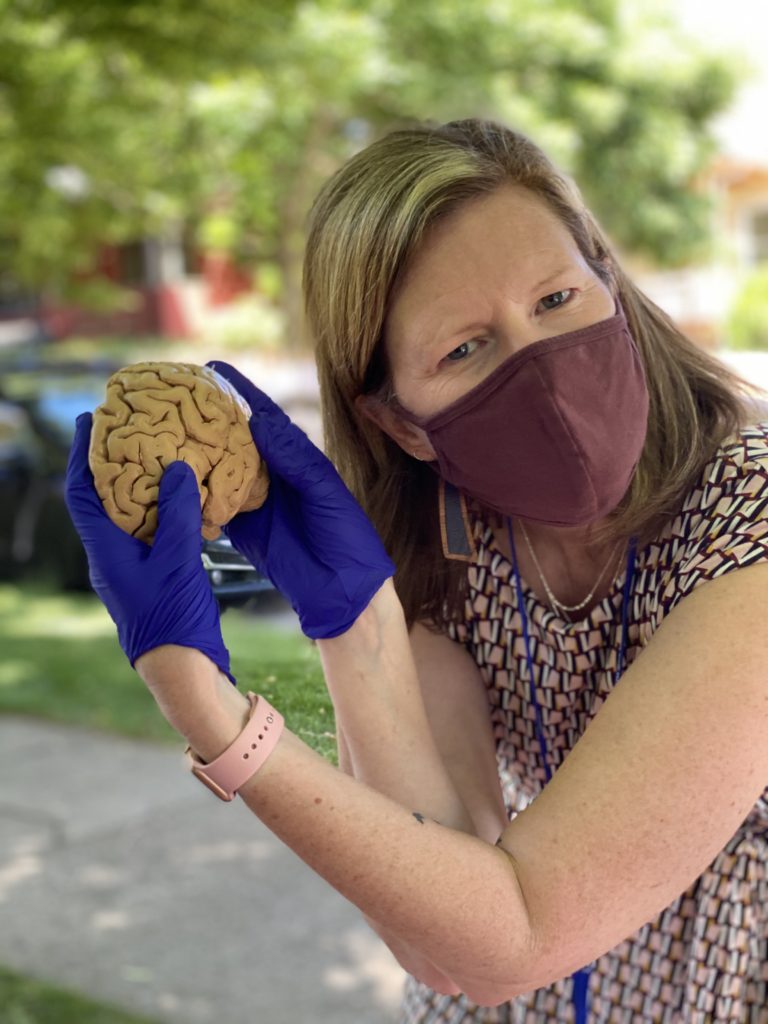
SEE WHAT WE’VE DONE BEFORE @ HOSFORD!
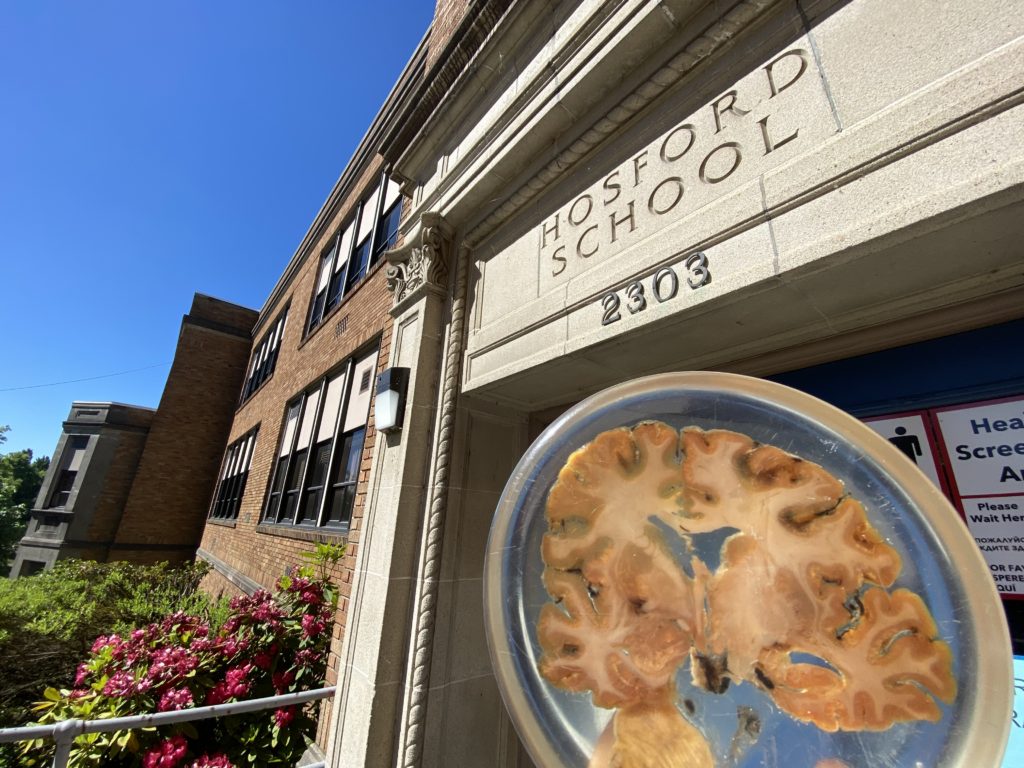
Honest selves @ Hosford
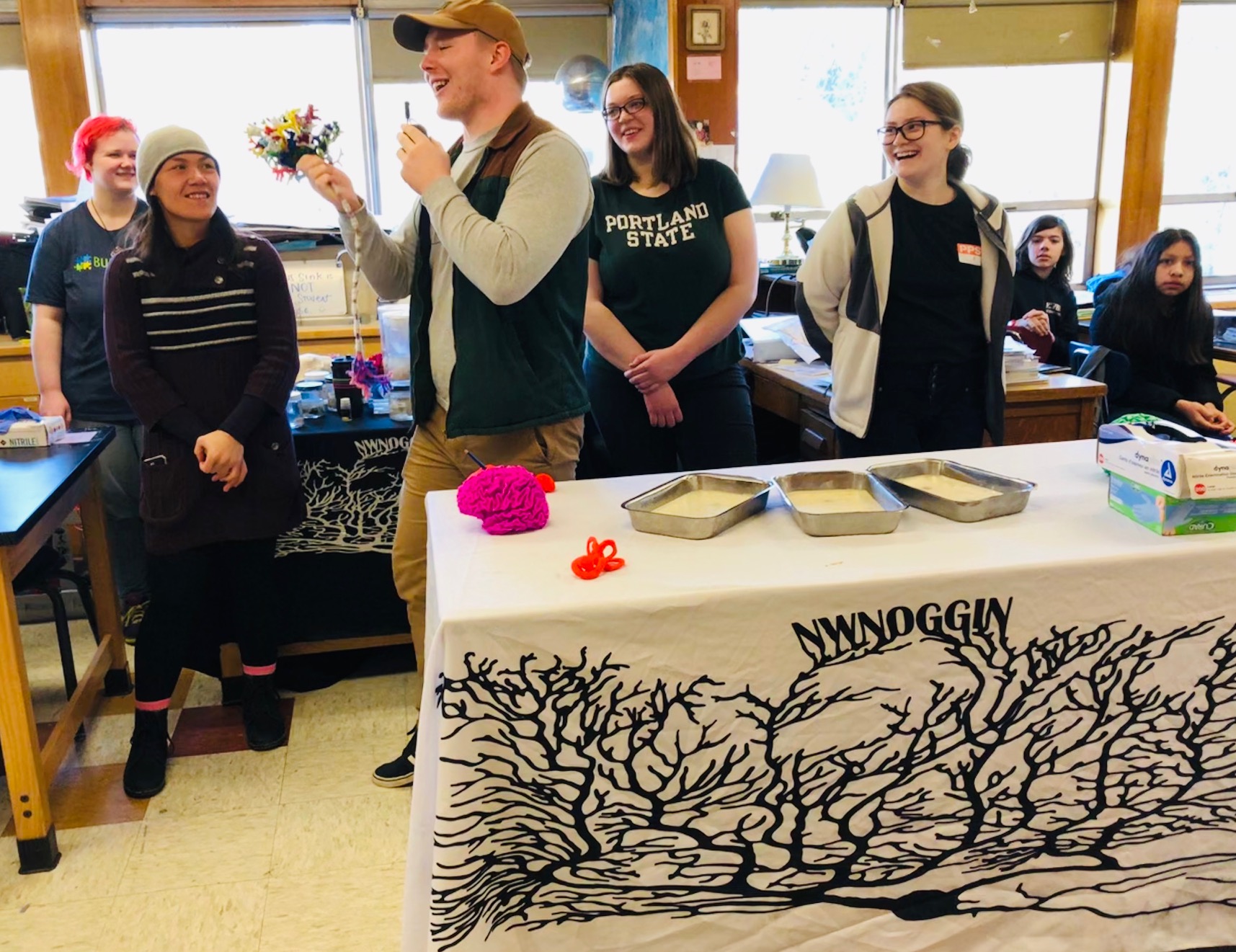
Brains, Art & Inquiry @ Hosford

High energy Hosford: Tumors, music & drugs!



